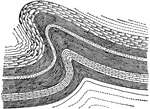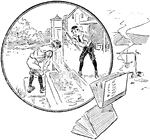Clipart tagged: ‘Trough’

Cow Eating Hay in Barn
An illustration of a young cow eating hay out of a trough and a dog peeking around the corner.
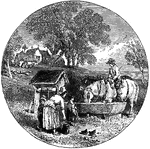
Horse Drinking
A horse drinking from a trough next to a well. An old woman is tending to the chickens and children.

Strata Folds
"A syncline is a downfolding of the strata in the form of a trough, as at a...An anticline is an upfolding…
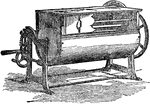
Kneading Machine
"A form of dough-making machine in common use. It consists of a trough or box, the lower portion of…

Kneading Machine
"A kneading-machine of a highly approved form, used in the great Scipion bakery of Paris, the invention…
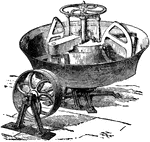
Kneading Machine
"The trough is a castiron basin, which turns on a vertical axis. The interior is provided with a kneader,…
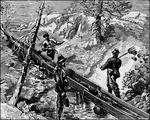
A Sluice Box - Miners Work in the Forest
"In mining, a trough made of boards, used for separating gold from the gravel and sand in which it occurs.…
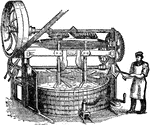
Vertical Mixer
"This machine consists of two vertical shafts, carrying radial arms. These arms pass each other in opposite…
Constructive Interference
"Start a trough from A. At the moment of its reflection as a crest a B, start a crest at A as shown.…
Destructive Interference
"Using the rope...start a crest at A. At the moment of its reflection at B as a trough, start a second…
Fixed Wave Reflection
"Suport a soft cotton rope several yards long between two fixed supports, as the opposite sides of the…
Form of Waves
"Tie one end of a soft cotton rope about 20 feet long to a fixed support, and hold the other end in…

